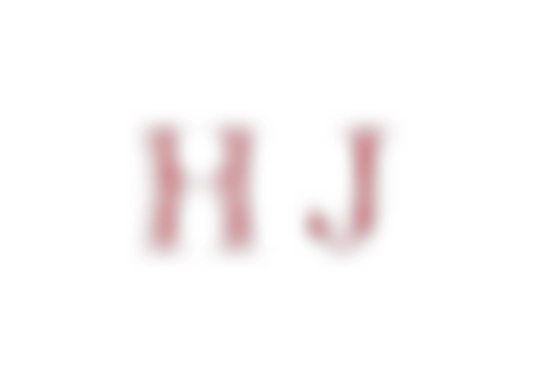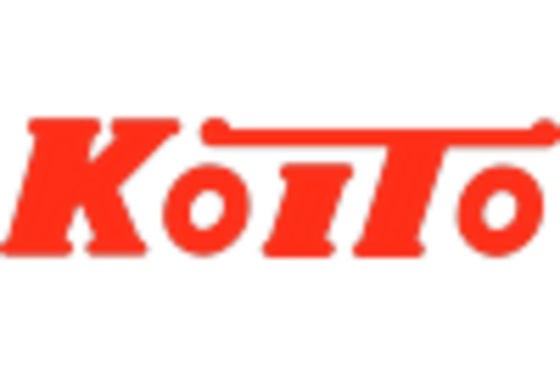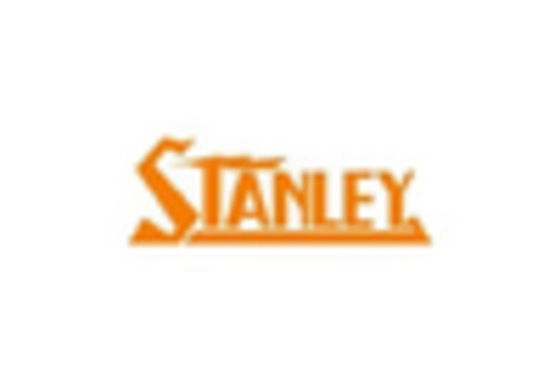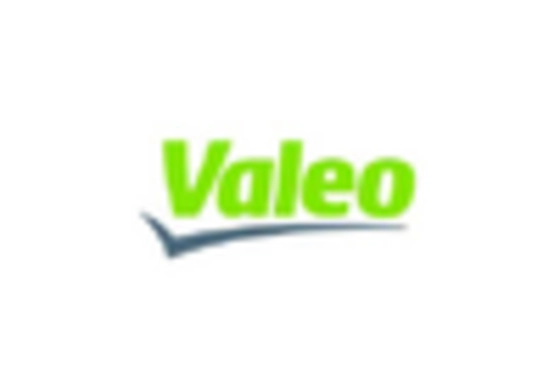Cost Efficiency
Cost efficiency is a crucial driver in the Automotive LED Lighting Market. While the initial investment in LED technology may be higher than traditional lighting, the long-term savings are substantial. LEDs have a significantly longer lifespan and lower energy consumption, which translates to reduced replacement and operational costs. For instance, studies suggest that switching to LED lighting can save vehicle manufacturers up to 50% in energy costs over the lifespan of the vehicle. This cost efficiency is appealing not only to manufacturers but also to consumers who are increasingly aware of the total cost of ownership. As the automotive industry continues to focus on cost-effective solutions, the adoption of LED lighting is likely to accelerate.
Consumer Preferences
Consumer preferences are increasingly steering the Automotive LED Lighting Market towards LED solutions. Modern consumers prioritize aesthetics, safety, and energy efficiency when selecting vehicles. LED lighting offers a sleek, modern appearance that appeals to buyers, while also providing superior illumination compared to traditional lighting options. Additionally, the longevity of LED lights, which can last up to 25,000 hours, aligns with consumer desires for low-maintenance solutions. Market data indicates that vehicles equipped with LED lighting are perceived as more advanced and desirable, leading to higher sales. As consumer preferences continue to evolve, the demand for LED lighting in vehicles is expected to rise, further propelling market growth.
Regulatory Compliance
Regulatory compliance is a significant driver for the Automotive LED Lighting Market. Governments worldwide are implementing stringent regulations regarding vehicle safety and emissions, which indirectly promote the adoption of LED lighting solutions. For example, regulations mandating the use of energy-efficient lighting systems in vehicles are becoming more prevalent. This regulatory landscape encourages manufacturers to transition from traditional lighting to LED alternatives, which are not only compliant but also offer superior performance. The market for automotive LED lighting is projected to grow as manufacturers adapt to these regulations, ensuring that their products meet the required standards while enhancing vehicle safety and efficiency.
Sustainability Initiatives
The Automotive LED Lighting Market is increasingly influenced by sustainability initiatives. As consumers become more environmentally conscious, manufacturers are compelled to adopt eco-friendly practices. LED lighting, known for its energy efficiency and longevity, aligns with these sustainability goals. In fact, LEDs consume up to 75% less energy than traditional incandescent bulbs, which not only reduces carbon footprints but also lowers operational costs for vehicle manufacturers. This shift towards sustainable practices is further supported by regulatory frameworks that encourage the adoption of energy-efficient technologies. Consequently, the demand for LED lighting solutions is expected to rise, as automakers seek to enhance their sustainability profiles while meeting consumer expectations.
Technological Advancements
Technological advancements play a pivotal role in shaping the Automotive LED Lighting Market. Innovations in LED technology, such as improved lumens per watt and enhanced thermal management, have led to the development of more efficient and durable lighting solutions. The integration of smart technologies, including adaptive lighting systems and connectivity features, is also gaining traction. These advancements not only enhance vehicle safety and aesthetics but also contribute to energy savings. For instance, the introduction of matrix LED headlights allows for dynamic light distribution, improving visibility without blinding oncoming drivers. As these technologies continue to evolve, they are likely to drive further growth in the LED lighting segment of the automotive market.


















Leave a Comment